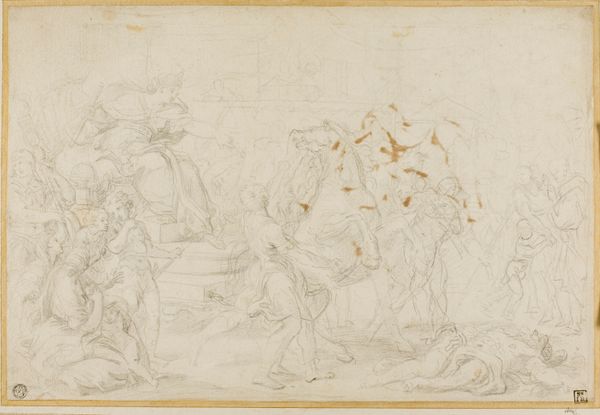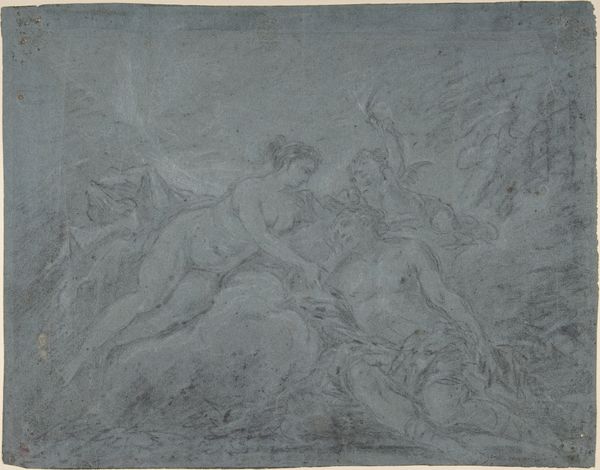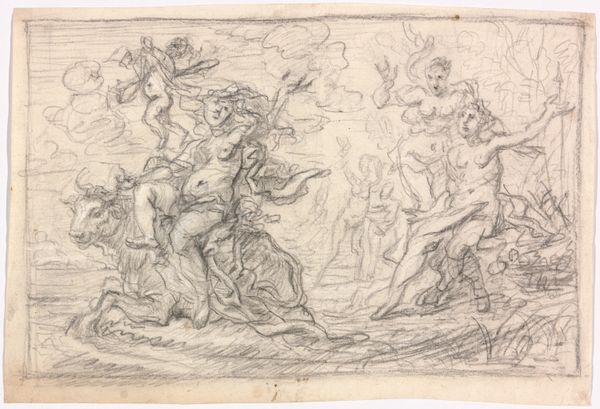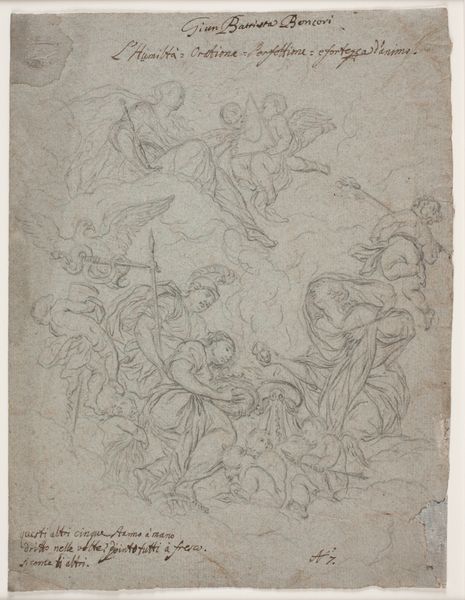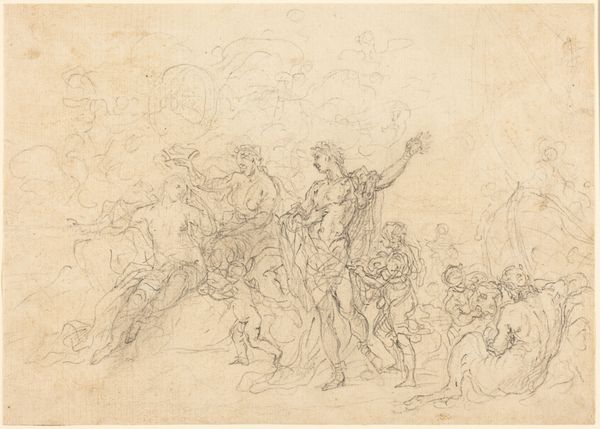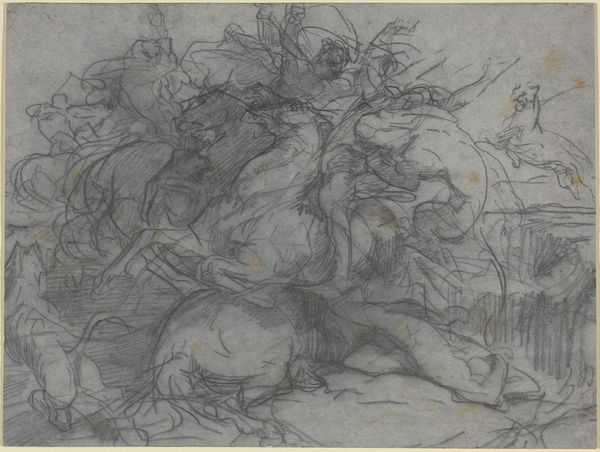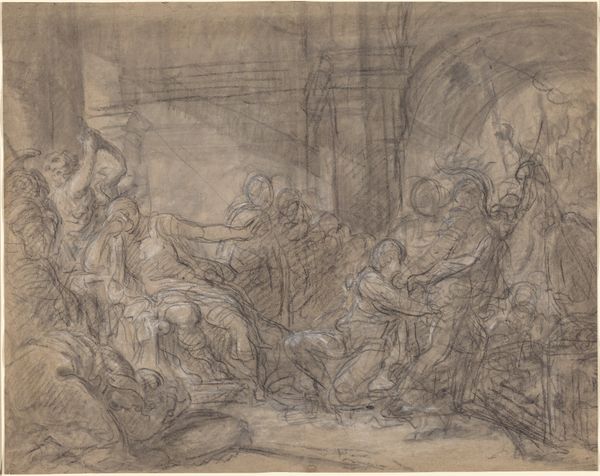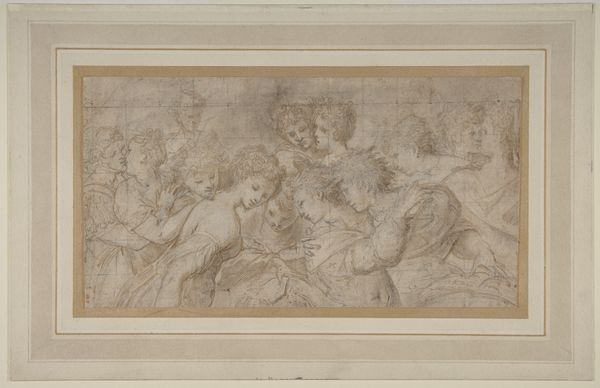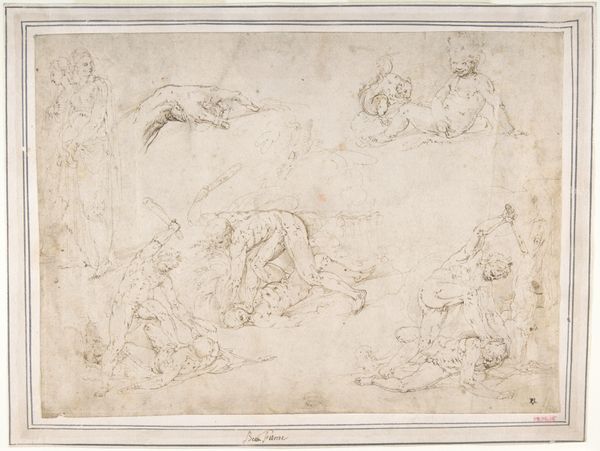
Venus Lamenting the Dead Adonis (or Diana and Endymion) 1740 - 1797
0:00
0:00
Dimensions: sheet: 7 1/16 x 10 3/8 in. (18 x 26.4 cm)
Copyright: Public Domain
Editor: So, here we have "Venus Lamenting the Dead Adonis (or Diana and Endymion)," a pencil and graphite drawing made between 1740 and 1797 by Januarius Zick. It feels really... spectral, almost like a half-remembered dream. What do you see when you look at it? Curator: It’s interesting that you use the word spectral. Indeed, the sketch emphasizes the transition from the world of the living to the afterlife, symbolized by figures seemingly dissolving into the background, a visual metaphor that reflects the Romantic era’s preoccupation with mortality. Do you notice how the figures are arranged, and what emotions are being represented here? Editor: I see a clear sense of grief. Venus is obviously distraught, and the swirling lines kind of amplify that emotional chaos. Curator: Precisely. Venus embodies a primal archetype of sorrow and mourning found across various cultures. In moments like these, symbols of grief, even in the subtlest lines, have a universal power. The angels, for example, are not merely aesthetic elements, but carry the weight of conveying divine empathy and comfort to mortal suffering. What continuities do you observe between these representations of Venus and depictions in other eras or media? Editor: I guess I never really thought about how consistently Venus is depicted in positions of power, even in sorrow here there is a distinct intensity radiating from the piece that resonates across artistic interpretation and epochs. So how much of the artist’s feeling is truly transferred to this image and then, to us? Curator: The graphite whispers to us across centuries, bearing Zick's cultural imprint and personal vision, yes, but also inviting us to remember shared human experiences. Venus' lament continues echoing. Editor: This really highlights how much cultural baggage a single image can carry! It’s a reminder that looking at art isn't just about aesthetics but about tapping into this well of shared symbolic meaning. Curator: Exactly! It's an engagement with cultural memory. A dialogue with images.
Comments
No comments
Be the first to comment and join the conversation on the ultimate creative platform.

